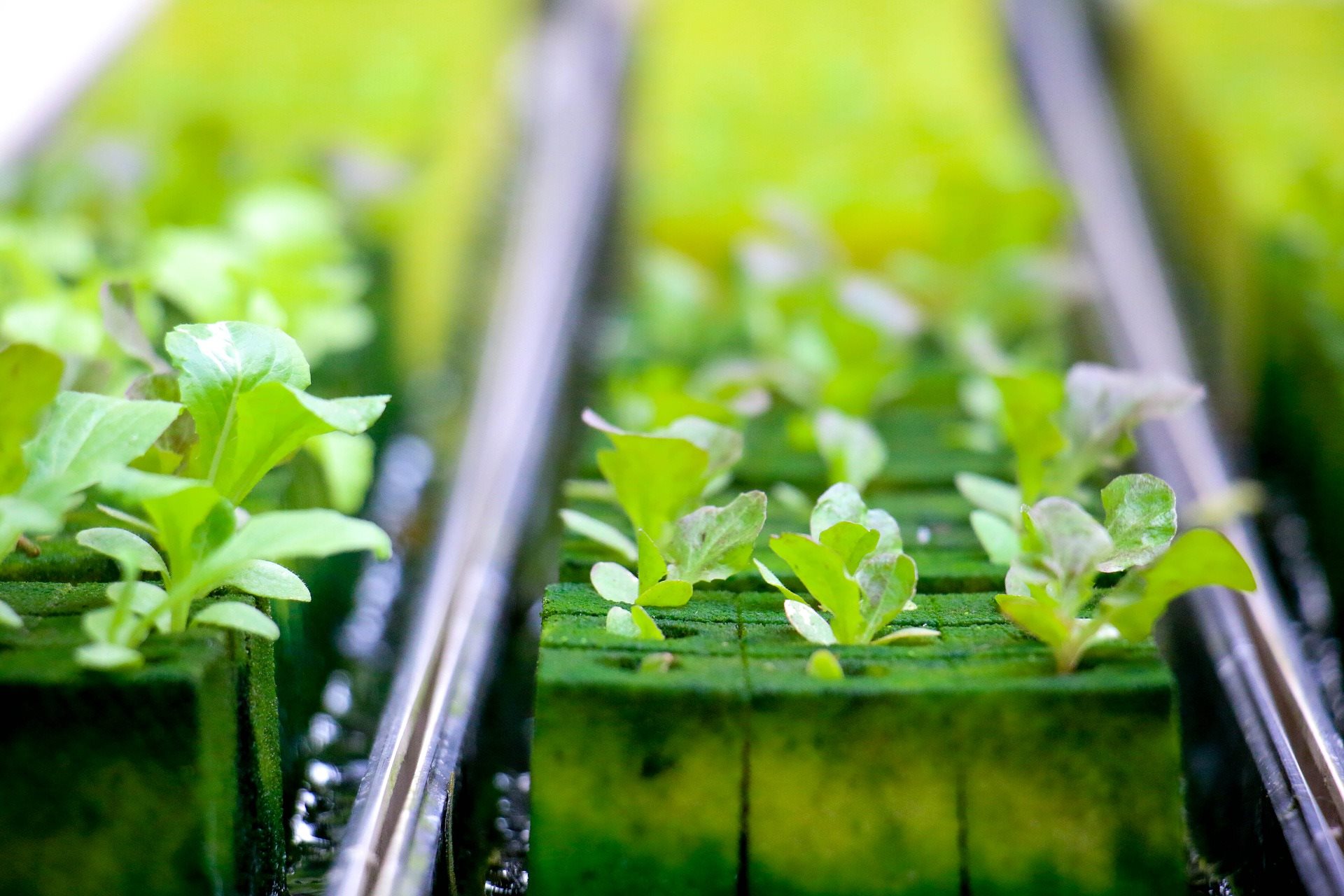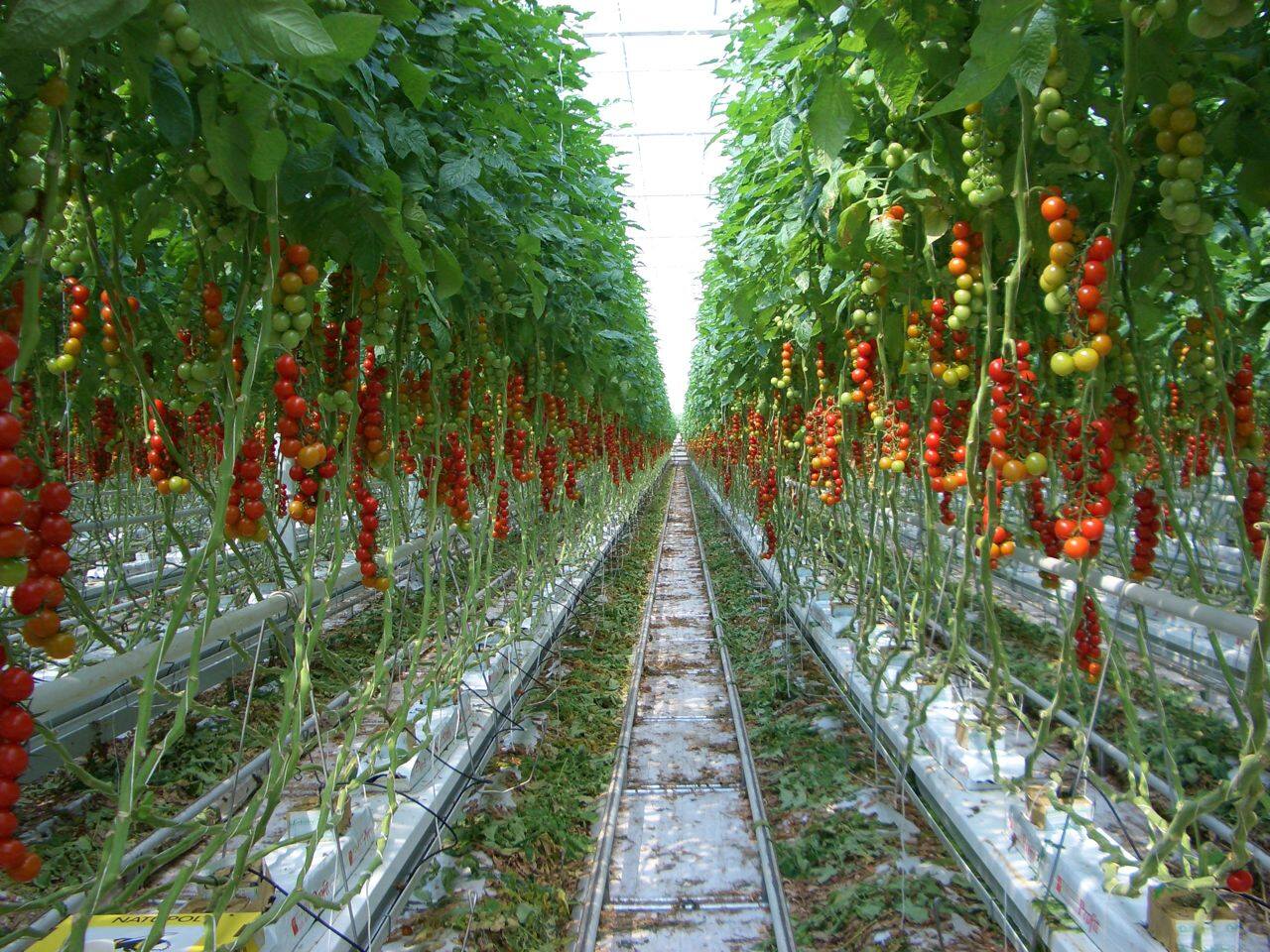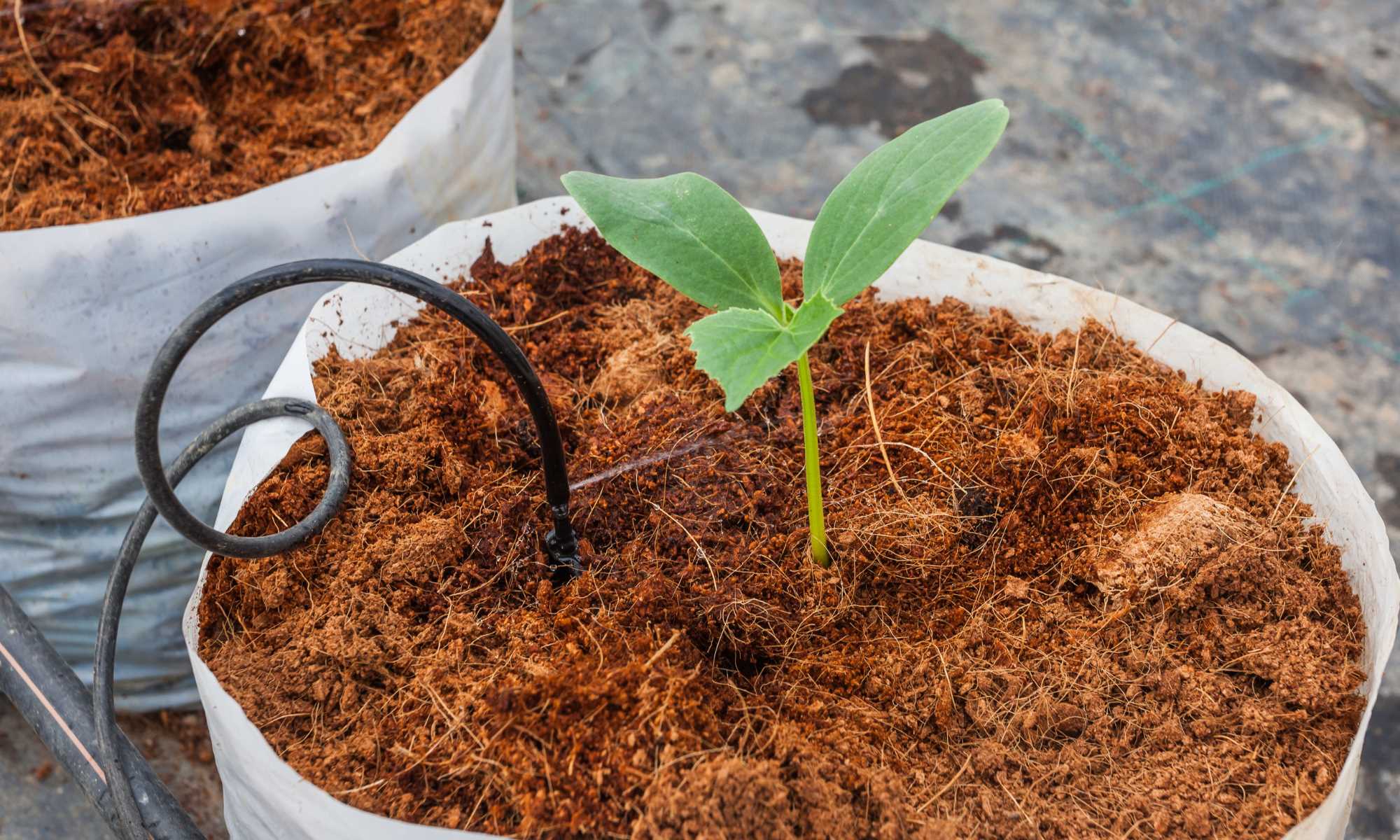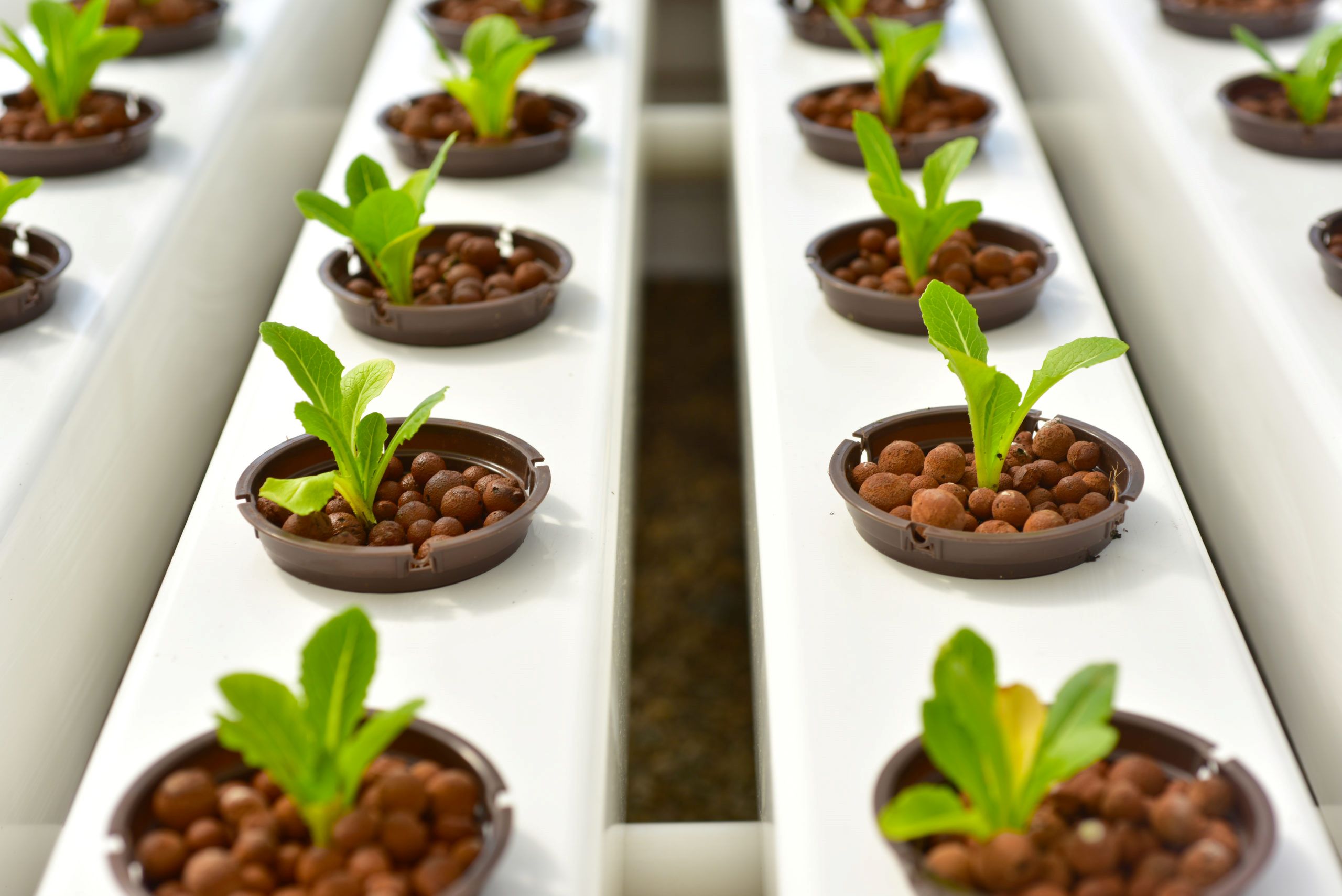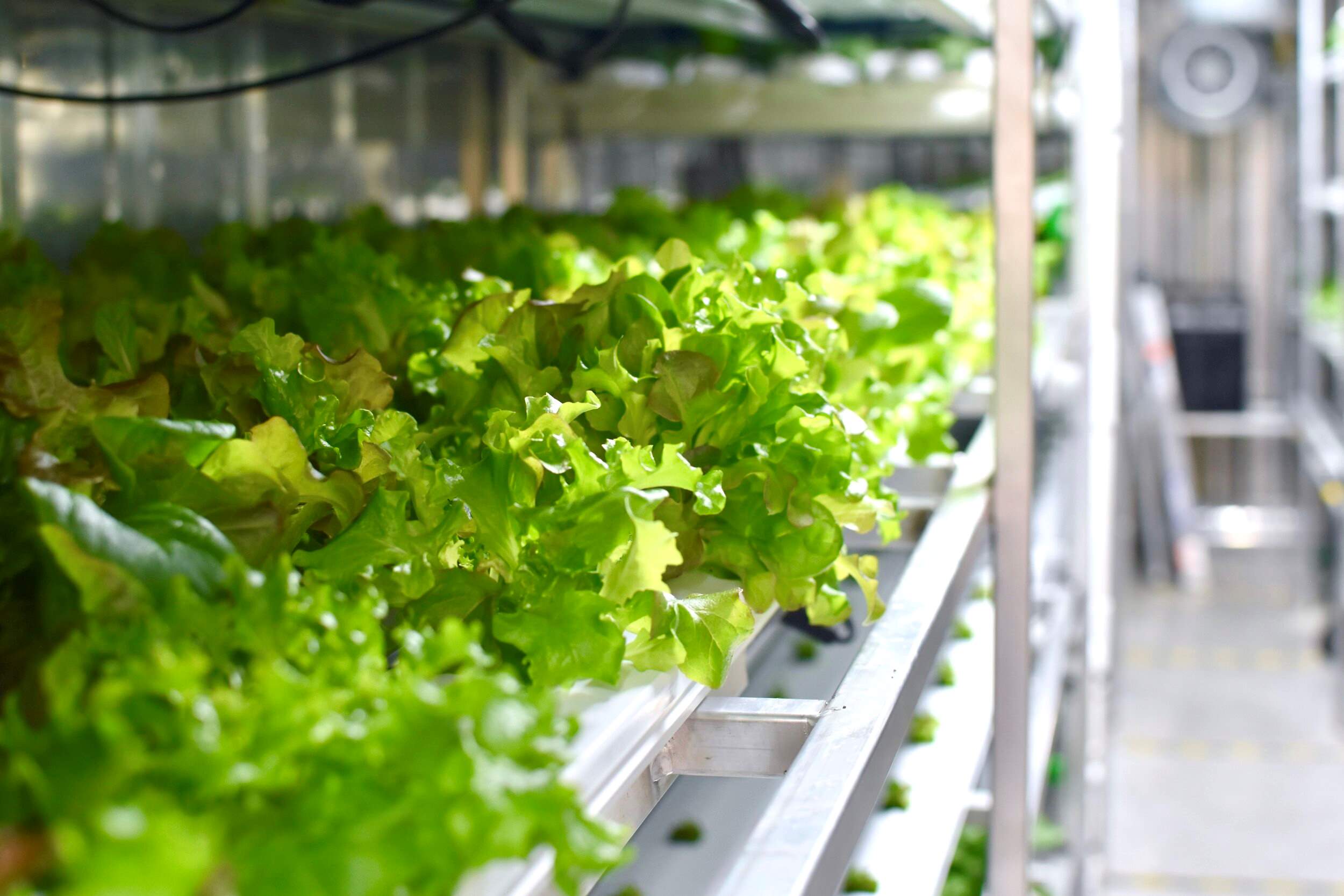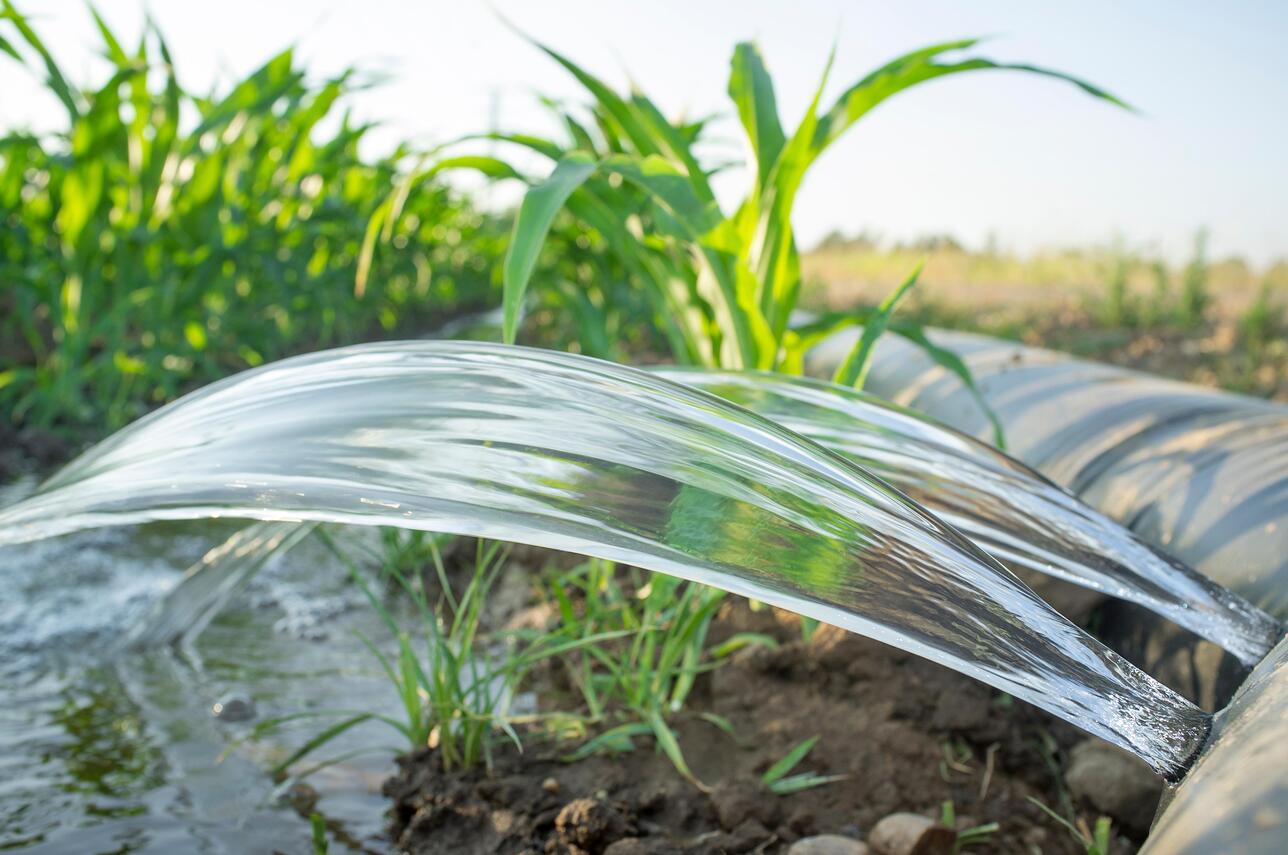Home>Gardening Tips and Tricks>Eco-Friendly Gardening>Why Is Hydroponics Used
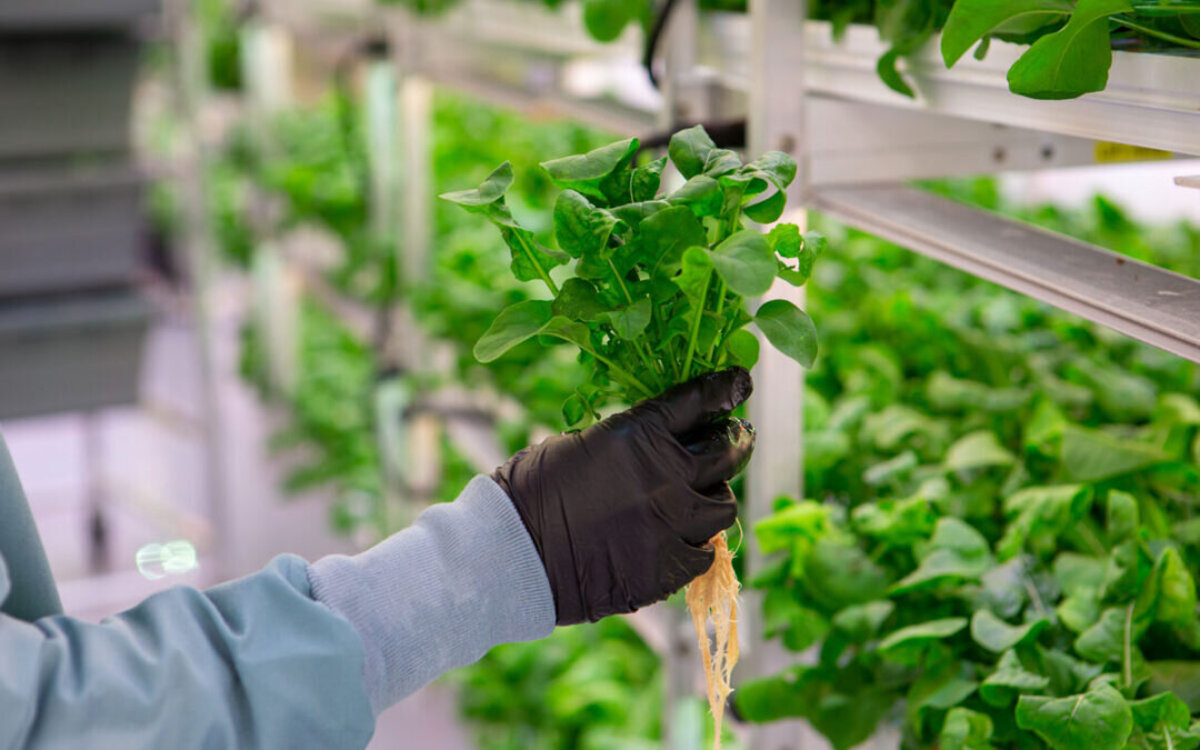

Eco-Friendly Gardening
Why Is Hydroponics Used
Modified: January 22, 2024
Discover the benefits of hydroponics for eco-friendly gardening. Grow your own plants without soil and reduce water consumption with this sustainable gardening method.
(Many of the links in this article redirect to a specific reviewed product. Your purchase of these products through affiliate links helps to generate commission for Chicagolandgardening.com, at no extra cost. Learn more)
Table of Contents
Introduction
Eco-friendly gardening is gaining popularity as people become more conscious of the impact their actions have on the environment. One innovative method that aligns perfectly with this mindset is hydroponics. Hydroponics is a system of growing plants without soil, using nutrient-rich water solutions instead. This method has been extensively studied and utilized in both commercial and home gardening settings.
Hydroponics offers a sustainable and eco-friendly alternative to traditional gardening methods. By eliminating the need for soil, this system not only reduces water consumption but also minimizes the use of harmful pesticides and herbicides. Additionally, hydroponics maximizes the efficiency of land use and allows for year-round cultivation, making it an ideal option for urban gardening or regions with limited arable land.
By understanding the advantages and disadvantages of hydroponics, we can discover why this method is becoming increasingly popular and how it contributes to creating a more eco-friendly gardening culture.
What is Hydroponics?
Hydroponics is a soilless gardening technique that allows plants to grow in a controlled water-based environment. Instead of relying on soil for nutrients, plants are grown in an inert medium like perlite, vermiculite, or coco coir. These mediums provide stability and support to the plants while allowing their roots to access water and nutrient solutions directly.
In a hydroponic system, the nutrient-rich water solution is circulated and delivered directly to the plant roots, ensuring they receive the optimal amount of nutrients they need to grow. This method eliminates the need for traditional soil-based gardening, providing several benefits in terms of sustainability and efficiency.
One of the key components of hydroponics is the use of a reservoir to hold the nutrient solution, which is then distributed to the plants through various techniques such as drip irrigation, nutrient film technique (NFT), or deep water culture (DWC). These systems can be set up in both small-scale home gardens and large-scale commercial operations.
Hydroponics enables gardeners to have precise control over various environmental factors such as pH levels, nutrient concentrations, and even lighting. This level of control ensures plants receive optimal conditions for growth, leading to healthier and more productive crops.
Advantages of Hydroponics
Hydroponics offers numerous advantages over traditional soil-based gardening methods. Let’s explore some of the key benefits:
- Increased Crop Yield: Hydroponics allows plants to receive a direct and balanced supply of nutrients, resulting in faster and healthier growth. As a result, hydroponic gardens often produce higher crop yields compared to traditional methods.
- Water Conservation: Hydroponics uses up to 90% less water compared to traditional soil-based gardening. The recirculation of water in hydroponic systems minimizes water loss through evaporation, making it a much more water-efficient method.
- Efficient Use of Space: Hydroponics can be practiced in vertical systems, allowing for the efficient use of limited space. This makes it particularly suitable for urban gardening or areas with restricted land availability.
- No Soil Dependency: Since hydroponics does not require soil, it eliminates issues related to soil-borne diseases and pests. Gardeners can enjoy healthier plants without relying on chemical pesticides and herbicides.
- Controlled Environment: Hydroponics provides precise control over environmental factors such as light, temperature, and humidity. This control allows for year-round cultivation, regardless of seasonal changes, resulting in a consistent and uninterrupted harvest.
These advantages make hydroponics an attractive option for eco-conscious gardeners seeking to maximize the efficiency of their gardening practices while reducing their environmental impact.
Increased Crop Yield
One of the significant advantages of hydroponics is its ability to significantly increase crop yield. This is primarily due to the precise control over nutrient delivery and environmental factors that hydroponic systems provide. Let’s explore how hydroponics achieves higher crop yields:
Optimal Nutrient Delivery: In a hydroponic system, plants receive a direct and balanced supply of nutrients. The nutrient-rich water solution is delivered directly to the plant roots, ensuring they have access to all the necessary elements for growth. This eliminates the competition for nutrients that can occur in soil-based systems and allows for optimal nutrient absorption.
Stable pH Levels: Hydroponic systems allow for precise control of the pH levels in the nutrient solution. Maintaining a stable pH range ensures that the plants can efficiently absorb nutrients. This prevents nutrient deficiencies or toxicities that can hinder plant growth and development.
Optimized Environmental Factors: Hydroponics provides excellent control over various environmental factors such as light, temperature, and humidity. By optimizing these factors, plants can photosynthesize more efficiently and grow at an accelerated rate. This results in faster growth and higher crop yields compared to traditional gardening methods.
Continuous Harvest: Hydroponics allows for year-round cultivation regardless of seasonal changes. With the ability to control environmental conditions, hydroponic systems can create ideal growing conditions throughout the year. This eliminates the challenges associated with seasonal limitations and allows for a continuous harvest.
With these advantages, hydroponics enables gardeners to produce more crops in a shorter amount of time compared to traditional gardening methods. This increased crop yield is particularly beneficial for commercial growers or those looking to maximize their home garden’s productivity.
Water Conservation
Water scarcity is a significant concern in many regions, making water conservation a crucial aspect of sustainable gardening. Hydroponics excels in this area by utilizing water in a highly efficient manner. Here are some reasons why hydroponics is a water-saving solution:
Reduced Water Usage: Hydroponic systems use up to 90% less water compared to traditional soil-based gardening. This is because water in hydroponics is recirculated and reused, minimizing water loss through evaporation or runoff. The closed-loop system ensures that plants receive the required amount of water without wasting excess amounts.
Precise Water Delivery: In hydroponics, water is delivered directly to the plant roots. This targeted delivery method ensures that plants receive the exact amount of water they need, minimizing water wastage. Unlike traditional gardening methods, there is no risk of water being lost to the surrounding soil or being absorbed by weeds.
No Leaching of Nutrients: In soil-based gardening, excess water can cause nutrients to leach out of the root zone, leading to nutrient runoff and potential pollution. In hydroponics, the closed-loop system prevents nutrient leaching, allowing plants to efficiently utilize the supplied nutrients. This not only conserves water but also ensures optimal nutrient uptake.
Water Recycling: Since hydroponics recirculates water, any excess water not absorbed by the plants is collected and reused. This recycling process minimizes water wastage and reduces the need for constant watering. Moreover, it lowers the demand for freshwater resources, making hydroponics an environmentally responsible gardening choice.
By adopting hydroponics, gardeners can make a significant contribution to water conservation efforts. The reduced water usage and efficient water delivery of hydroponic systems not only promote sustainable gardening practices but also alleviate the strain on water resources, especially in areas prone to drought or water scarcity.
Efficient Use of Space
One of the notable advantages of hydroponics is its ability to maximize the use of space, making it an ideal option for those with limited gardening areas. Here are some reasons why hydroponics offers efficient space utilization:
Vertical Gardening: Hydroponic systems can be designed vertically, utilizing unused vertical space. By stacking growing trays or using vertical towers, gardeners can grow plants on multiple levels, effectively multiplying the growing area. This is especially beneficial for urban gardening or small balconies where horizontal space is limited.
Dense Planting: In hydroponics, plants can be grown much closer together compared to traditional soil-based gardening. Without the need for extensive root systems to search for nutrients, plants can be placed in close proximity, maximizing the use of available space. This dense planting allows gardeners to grow more plants per square foot.
Optimized Layout: With hydroponics, gardeners have the flexibility to design the layout of their system according to the available space. Whether it’s a small corner indoors or a larger greenhouse, hydroponic systems can be customized to fit specific dimensions and utilize every inch efficiently.
No Soil Requirements: Hydroponic systems eliminate the need for soil, which eliminates the bulk and weight associated with traditional gardening. This means that hydroponic setups can be more compact and require less space overall. Additionally, not relying on soil allows for vertical and modular setups, providing even more space-saving options.
By utilizing space more effectively, hydroponics provides an excellent solution for those with limited gardening areas. It allows gardeners to grow a significant amount of produce in a compact space, making it an attractive option for urban dwellers or anyone looking to maximize the efficiency of their gardening space.
No Soil Dependency
Hydroponics eliminates the reliance on traditional soil for plant growth. This aspect offers several advantages and benefits, making hydroponics a versatile and sustainable gardening method. Let’s explore why hydroponics is free from soil dependency:
No Soil-Borne Diseases and Pests: In hydroponics, plants are grown in an inert medium like perlite or coconut coir, which does not harbor soil-borne diseases or pests. This reduces the risk of plant infestations and allows for healthier, disease-free crops.
Controlled Nutrient Delivery: In a hydroponic system, plants receive nutrients directly from the nutrient solution, eliminating the need for nutrient uptake through the soil. This allows for precise control over nutrient delivery, ensuring plants receive optimal nutrition without the risk of nutrient deficiencies.
Conservation of Land: The absence of soil in hydroponics allows for efficient land use. Without the need for vast areas of land for growing crops, hydroponics makes it possible to cultivate a large quantity of plants in smaller spaces. This is especially advantageous in urban areas with limited land availability.
Reduced Chemical Dependency: Soil-based gardening often requires the use of chemical fertilizers, herbicides, and pesticides to maintain plant health and combat weeds and pests. In hydroponics, the controlled environment and absence of soil reduce the need for these chemical inputs. This makes hydroponics a more eco-friendly and sustainable gardening method.
By eliminating soil dependency, hydroponics offers a cleaner, more efficient, and environmentally friendly approach to gardening. It opens up new possibilities for growing plants in different environments and allows for greater control over plant health and productivity.
Controlled Environment
One of the key advantages of hydroponics is the ability to create a controlled growing environment for plants. By manipulating various factors like light, temperature, humidity, and nutrient levels, hydroponic systems can provide optimal conditions for plant growth. Let’s explore how this controlled environment benefits hydroponics:
Precise Light Exposure: In hydroponic systems, artificial lighting can be used to provide consistent and optimal light levels for plants. This ensures that plants receive the necessary amount and quality of light for photosynthesis, resulting in robust and healthy growth. Additionally, the ability to control the photoperiod allows for year-round cultivation, overcoming limitations imposed by natural sunlight.
Temperature and Humidity Control: Hydroponic systems enable precise control over temperature and humidity levels, creating an ideal climate for plant growth. This is particularly advantageous for cultivating plants that have specific temperature or humidity requirements, as the conditions can be adjusted accordingly. This control minimizes stress on plants and ensures optimal growth and production.
Optimized Nutrient Delivery: Hydroponics allows for precise control over the nutrient composition and concentration in the water solution. This ensures that plants receive the right balance of essential nutrients. Additionally, the availability of nutrients in hydroponics is not dependent on soil conditions, further enhancing the control and efficiency of nutrient delivery.
Protection from External Factors: In a hydroponic system, plants are housed in a controlled environment, reducing their exposure to external factors such as pests, diseases, and adverse weather conditions. This minimizes the need for chemical pesticides and herbicides and creates a more stable and protected growing environment for the plants.
By providing a controlled environment, hydroponics offers gardeners the ability to optimize growing conditions for their plants. This level of control leads to healthier, more productive crops and allows for year-round cultivation, regardless of external factors.
Disadvantages of Hydroponics
While hydroponics offers numerous benefits, it also has its share of drawbacks. It’s important to be aware of these disadvantages to make informed decisions about adopting this gardening method:
Initial Setup Cost: Setting up a hydroponic system can be more expensive compared to traditional soil-based gardening. The cost of equipment, such as grow lights, nutrient solutions, pumps, and pH controllers, can add up. However, it’s important to note that the long-term savings in water and fertilizers may outweigh the initial investment.
Technical Expertise Required: Hydroponics requires a certain level of technical knowledge and understanding of plant nutrition, pH levels, and system maintenance. Monitoring and adjusting the nutrient solutions, managing pH levels, and troubleshooting potential issues are crucial tasks that hydroponic gardeners need to be familiar with.
Dependency on Artificial Inputs: Hydroponic systems heavily rely on artificial inputs such as nutrient solutions and electric-powered equipment. This dependency on external inputs may not align with a completely natural or organic gardening approach. However, there are options to use organic-certified nutrient solutions and minimize reliance on non-renewable resources.
Limited Crop Selection: Certain plants, especially those with extensive root systems or specific growth requirements, may not thrive in hydroponic systems. Root crops like potatoes or plants with deep taproots are generally not suitable for hydroponics. Additionally, some plants may require pollination by insects or wind, which can be challenging to replicate in enclosed hydroponic environments.
While these disadvantages exist, they can often be overcome with proper planning, knowledge, and experience. It’s essential to weigh the benefits and drawbacks of hydroponics and determine if it aligns with your specific gardening goals and circumstances.
Initial Setup Cost
One of the main disadvantages of hydroponics is the higher initial setup cost compared to traditional soil-based gardening. Hydroponic systems require specific equipment and supplies that can add to the overall expense. Let’s explore some factors that contribute to the initial cost:
Infrastructure and Equipment: Setting up a hydroponic system typically involves investing in infrastructure such as grow lights, grow tents, or a greenhouse. Additionally, specialized equipment like pumps, timers, pH meters, and nutrient dosers may be needed to maintain optimal conditions for plant growth. These expenses can vary based on the size and complexity of the system.
Grow Medium and Nutrient Solutions: Hydroponics relies on inert grow media like perlite, vermiculite, or coconut coir, which need to be purchased in order to support plant growth. Additionally, nutrient solutions specifically formulated for hydroponics are necessary to provide plants with the essential nutrients they need. The cost of these media and solutions can add up depending on the scale of the hydroponic setup and the number of plants being cultivated.
Electricity and Water Usage: Hydroponic systems require access to a reliable source of electricity to power equipment such as pumps, grow lights, and environmental control systems. The increased electricity usage can contribute to higher utility bills. Moreover, although hydroponics is water-efficient compared to traditional gardening, the initial setup may require an investment in plumbing or water supply systems to ensure adequate water circulation and availability.
While the initial setup cost of hydroponics may seem daunting, it’s important to consider the long-term benefits and potential savings. Hydroponic systems are highly efficient in resource usage, such as water and fertilizers, compared to traditional gardening methods. Over time, the savings generated from reduced resource consumption may offset the initial investment.
It’s also worth noting that hydroponics can be scalable, allowing gardeners to start small and gradually expand their system as they gain experience and confidence. DIY options and budget-friendly alternatives are also available, making hydroponics accessible to a wide range of budgets.
Technical Expertise Required
Hydroponics requires a certain level of technical knowledge and expertise to set up and maintain a successful system. It’s essential to understand the various aspects of plant nutrition, pH levels, and system management to ensure optimal plant growth. Here are some key areas where technical expertise is required:
Nutrient Management: In hydroponics, gardeners need to carefully manage the nutrient solution to provide plants with the right balance of essential nutrients. This involves understanding the nutritional requirements of different plant species, monitoring nutrient concentrations, and ensuring adequate nutrient uptake. Regular testing of the nutrient solution and adjusting its composition or concentration may be necessary to maintain optimal plant growth.
pH Level Monitoring and Adjustment: Maintaining the correct pH level of the nutrient solution is crucial for nutrient availability and absorption. Hydroponic gardeners need to regularly measure the pH level and make the necessary adjustments to ensure it is within the appropriate range for optimal nutrient uptake. pH buffers may need to be used to bring the pH levels to the desired range.
System Maintenance: Hydroponic systems require regular maintenance to ensure proper functioning. This includes cleaning or replacing grow media, unclogging or replacing pumps, and resolving any issues that may arise with the system. Technical knowledge is necessary to troubleshoot and address problems effectively to prevent damage to the plants.
Environmental Monitoring: Hydroponics allows for precise control of environmental factors such as temperature, humidity, and lighting. Monitoring and adjusting these variables requires a good understanding of plant requirements and the impact of environmental conditions on growth. Gardeners need to be able to manage temperature levels, control humidity, and provide adequate lighting to promote optimal plant development.
While hydroponics does require technical expertise, it is a skill that can be acquired through learning and hands-on experience. There are numerous resources available, such as books, online tutorials, and community forums, that can provide guidance and support for those looking to delve into hydroponics. Starting small and gradually expanding the system allows for a learning curve and a space to develop the required technical skills.
By gaining the necessary technical knowledge, hydroponic gardeners can harness the full potential of this gardening method and achieve successful and productive results.
Dependency on Artificial Inputs
One of the drawbacks of hydroponics is its reliance on artificial inputs to support plant growth. While this may not align with a completely natural or organic gardening approach, it is important to understand the reasons behind this dependency and potential solutions. Let’s explore the key aspects of this disadvantage:
Nutrient Solutions: Hydroponics requires the use of nutrient solutions to provide essential minerals and elements to the plants. These solutions are often specifically formulated to meet the nutritional needs of different plant species. While these solutions can be tailored to be more organic or plant-based, they do rely on commercially available fertilizers that contain synthetic components.
Electricity: Hydroponic systems require electricity to power essential components such as pumps, grow lights, and environmental controls. This energy dependency might be a concern for those aiming for a more sustainable or off-the-grid approach to gardening. However, steps can be taken to minimize energy usage, such as utilizing energy-efficient equipment and implementing renewable energy sources like solar panels.
Water Quality: Hydroponics necessitates the use of water for the nutrient solution, and the quality of water plays a crucial role in plant health. Tap water may contain chlorine or other contaminants that can be harmful to plants. While there are water treatment options available, it still introduces an artificial input into the system.
Despite these dependencies, there are strategies to mitigate their impact and move towards a more sustainable approach within hydroponics:
Organic Alternatives: Gardeners can opt for nutrient solutions that are certified organic or derived from natural sources, reducing reliance on synthetic fertilizers. Additionally, exploring organic pest management techniques can minimize the need for chemical pesticides.
Water Management: Implementing water conservation practices, such as collecting and filtering rainwater or utilizing graywater, can reduce the reliance on treated tap water and minimize the need for artificial water inputs.
Sustainable Energy Sources: Incorporating renewable energy sources, such as solar panels or wind turbines, can help offset the energy consumption of hydroponic systems and make them more environmentally friendly.
While hydroponics does have a dependency on artificial inputs, exploring and implementing sustainable alternatives can mitigate its impact and align it more closely with eco-friendly gardening practices.
Conclusion
Hydroponics offers a revolutionary and eco-friendly approach to gardening, providing numerous advantages over traditional soil-based methods. It allows for increased crop yields, efficient use of space, water conservation, elimination of soil dependencies, and control over environmental factors. However, it is important to consider the disadvantages, including the initial setup cost, the need for technical expertise, dependency on artificial inputs, and limited crop selection.
Despite these drawbacks, hydroponics continues to gain popularity as more individuals recognize its potential for sustainable and efficient food production. With proper planning, knowledge, and a commitment to sustainable practices, hydroponics can be a viable solution for urban dwellers, those with limited gardening areas, and anyone seeking a more controlled and eco-friendly approach to growing plants.
As the popularity of hydroponics grows, so does the availability of resources, educational materials, and community support. This provides opportunities for individuals to learn and develop the necessary skills to successfully implement hydroponic systems and overcome the challenges it presents.
Ultimately, whether hydroponics is the right choice for you depends on your gardening goals, resources, and level of commitment. By carefully considering the advantages and disadvantages, you can make an informed decision and embark on a rewarding journey into the world of eco-friendly gardening with hydroponics.
